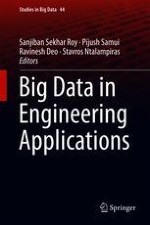2018 | OriginalPaper | Chapter
Prediction of Compressive Strength of Geopolymers Using Multi-objective Feature Selection
Authors : Lasyamayee Garanayak, Sarat Kumar Das, Ranajeet Mohanty
Published in: Big Data in Engineering Applications
Publisher: Springer Singapore
Activate our intelligent search to find suitable subject content or patents.
Select sections of text to find matching patents with Artificial Intelligence. powered by
Select sections of text to find additional relevant content using AI-assisted search. powered by
